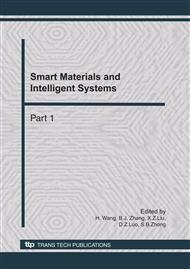p.260
p.265
p.271
p.277
p.283
p.287
p.293
p.298
p.303
Application of Genetic Algorithms in Particle Inversion
Abstract:
In the general light scattering particle size measurement methods, the inversion error of results is nonuniform distribution. To solve this problem, genetic algorithms based on real number coding were proposed to be applied in the inversion of particle size distribution. In this method, the fitness function was further improved in order to reduce the individual error, it not only considered sum of all errors but also took into account the individual maximum error. With this improved fitness function, the error distribution is homogenized. The light spectrum about measurement and calculation are basic entirely fitting. The results show that the algorithm is accurate and reliable.
Info:
Periodical:
Pages:
283-286
Citation:
Online since:
October 2010
Authors:
Price:
Сopyright:
© 2011 Trans Tech Publications Ltd. All Rights Reserved
Share:
Citation:


